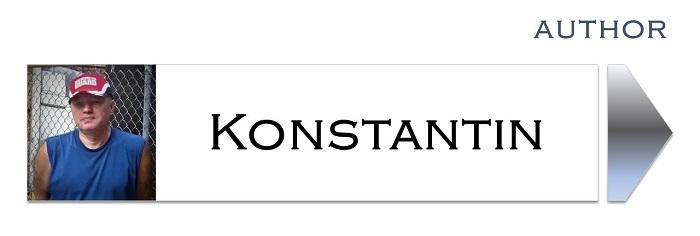![]()
 Inverter Generator vs Generator [Which is Better?]
Inverter Generator vs Generator [Which is Better?]
DISCLAIMER: AS AN AMAZON ASSOCIATE I EARN FROM QUALIFYING PURCHASES. THIS POST CONTAINS AFFILIATE LINKS THAT WILL REWARD ME MONETARILY OR OTHERWISE WHEN YOU USE THEM TO MAKE QUALIFYING PURCHASES. FOR MORE INFORMATION, PLEASE READ MY EARNINGS DISCLAIMER.
What’s the difference between an inverter generator and a regular generator? The primary distinction between inverter-generator and traditional generators is the type of electricity produced. Inverter generators generate electricity in three stages (AC-DC-AC), while conventional generators only produce AC (Alternating Current).
An inverter generator is a new generation of generators that are more fuel-efficient and are usually quieter (than the regular portable version). Mainly, their biggest drawback is the price. On the other hand, if you use less fuel to produce the same amount of energy, the savings are obvious.
A pure sine wave inverter generator also ensures there is less harmonic interference, making it a better energy source for more sensitive electronic devices (especially the ones with microprocessors). Even though a traditional portable generator also produces pure sine waves, it is much messier (see video below), which creates more harmonic distortion.
This is how you “clean up” a “dirty” generator sine wave (it was done by the means of an external inverter):
![]()
There are three types of inverter-generators available on the market right now:
- Stand-by inverter generator. This, large and heavy inverter-generator is big enough to keep your whole house running and it can be connected directly to your electrical panel (you will need a transfer switch, which is mandatory in many states). Some of them come with a handle and wheels and their output could be over 7,000 watts +.
- Portable inverter generator. These inverter-generators are not so large and they usually come with a handle and wheels (if they don’t, wheel kits are available separately). Their output ranges from 2,500 to 4,500 watts, which is perfect for RVers. These generators DON’T get connected to the electrical panel, but you plug your appliances directly via extension cords.
- Hand-held inverter generators. These generators are about a size of a gym bag and weigh about 50 to 60 pounds with a maximum output of 2,000 watts. Don’t forget that it is still a fossil fuel generator and these devices emit carbon monoxide at a rate that can easily build up to unhealthy levels in a small room. So, be careful and keep it outside. You can take it pretty much anywhere, where you will need some electricity (maybe a BBQ party?)

Next time if you out there enjoying the beauty of nature, and your friends require more human comforts besides the basics (like music, laptop, phone), all you have to do is bring a handheld inverter-generator along and you are all set to have a wonderful time:

A traditional portable generator’s main purpose is to run at 3600 rpm while producing 120 volts at 60 Hertz (in the USA). However, one of the most significant drawbacks of most gasoline-powered portable generators is that they cannot maintain a constant 3600 rpm (meaning voltage and Hz is also fluctuating).
This is why conventional generators are “famous” for creating a rough power that is not suitable for sensitive electronics. They are mostly used on construction sites and as a full house backup during an emergency. The noise aspect is another problem to face.
If you come across a “portable generator” it does not necessarily, mean that it is an “inverter-generator”. Look carefully at the labels before you make your selection:
Both forms of generators have advantages and disadvantages. What benefits outweigh which drawbacks are determined by the generator’s intended usage. Inverter generators are considered to be very efficient and quiet. This is because inverter generators do not run at full engine speed all the time.
They electronically throttle the engine up and down to satisfy demand. As a result, your efficiency will be increased efficiency and you won’t have to use so much gasoline. This type of technology does not generate too much noise.
Now, let’s look at the advantages of inverter-generators:
- Inverter generators use less fuel than traditional gas-powered generators. This has to do with the engine’s operation. The motor of a standard gasoline-powered portable generator operates at 3600 rpm (since that is the speed needed to produce 120 volts at 60 Hz). In contrast, an inverter generator would not need to spin at 3600 rpm to produce this energy but reduces the engine’s speed to just that which is needed by the load. As a result, an inverter generator will operate at a lower rpm, thus conserving energy and reducing the amount of Total Harmonic Distortion.
- Portability in mind. Inverter generators are more fuel-efficient, which means they need less fuel to operate for the same period of time as a traditional fuel-powered generator. This is why most inverter generators do not need a huge fuel tank.
- Noise level. Inverter generators produce less noise (about 45-60 dB) than traditional generators (that generally sound like lawnmowers). Inverter generators are known for being super silent (light humming) and that is due to the special 3-stage technology used. The inverter generator generates AC power, transforms it to DC power, and then returns it to AC power. This means that it does not require to operate at 3600 RPM all the time (like conventional generators) and along with full-body insulation, reduced noise levels are achieved.
| Generator | Inverter generator | |
| Cost | Less | More |
| Weight | More | Less |
| Size | More | Less |
| Noise | More | Less |
| Efficiency | Less | More |
| Emissions | More | Less |
| THD | More | Less |
| Mechanics | Simple | Complex |
Many inverter generators use fossil fuels as well. Inverter generators consist of a:
- A battery
- A fuel tank
- An alternator
- An inverter
The motor generates a high-frequency AC current, which the alternator then converts to DC current. After that, the inverter converts the DC current back into a more stable AC current.
Inverter generators produce 120 volts at 60 Hertz – very much like traditional portable generators, but the current of an inverter generator is more stable due to the additional steps in the electricity production process.
Inverter generators, in other words, have less harmonic distortion, which is why they are referred to as producing “clean energy.” The quality of electricity produced by inverter generators is equivalent to the quality of electricity provided by your utility provider.
Another interesting thing about inverter-generators is that they can be paralleled in order to give you more power. Two independent inverter generators (of the same model) can be attached in parallel to generate twice the amount of electricity.
Parallel capability is available in many newer inverter generator versions. Conventional portable generators do not currently support parallel connections.
Here is very interesting information about comparing inverter-generators to conventional generators:
![]()
In conclusion (like the video mentions), whether you need a regular generator or inverter-generator comes down to two things:
- Will you be using your generator at FULL LOAD? If so, their output is about the same, but the inverter-generator will cost more upfront.
- Will you be powering sensitive electronic equipment with it? If so, you don’t really have a choice and you need an inverter-generator unless you want to invest in extra equipment to “clean up” the electricity it produces (like mentioned in this article).

Click on the white button above to find your electrician!





What do you mean by fusl inverter